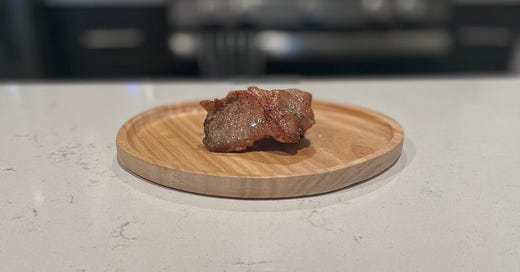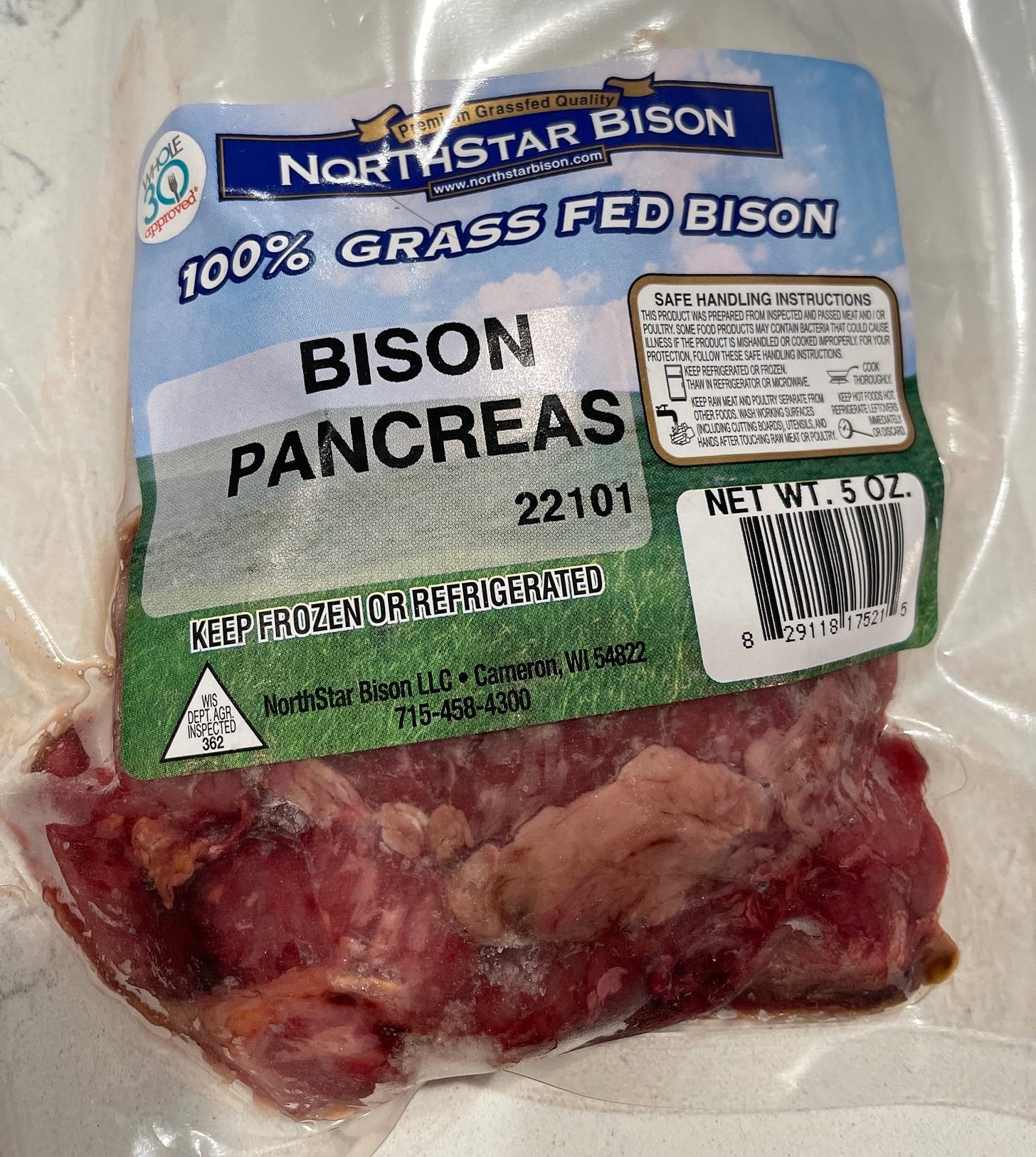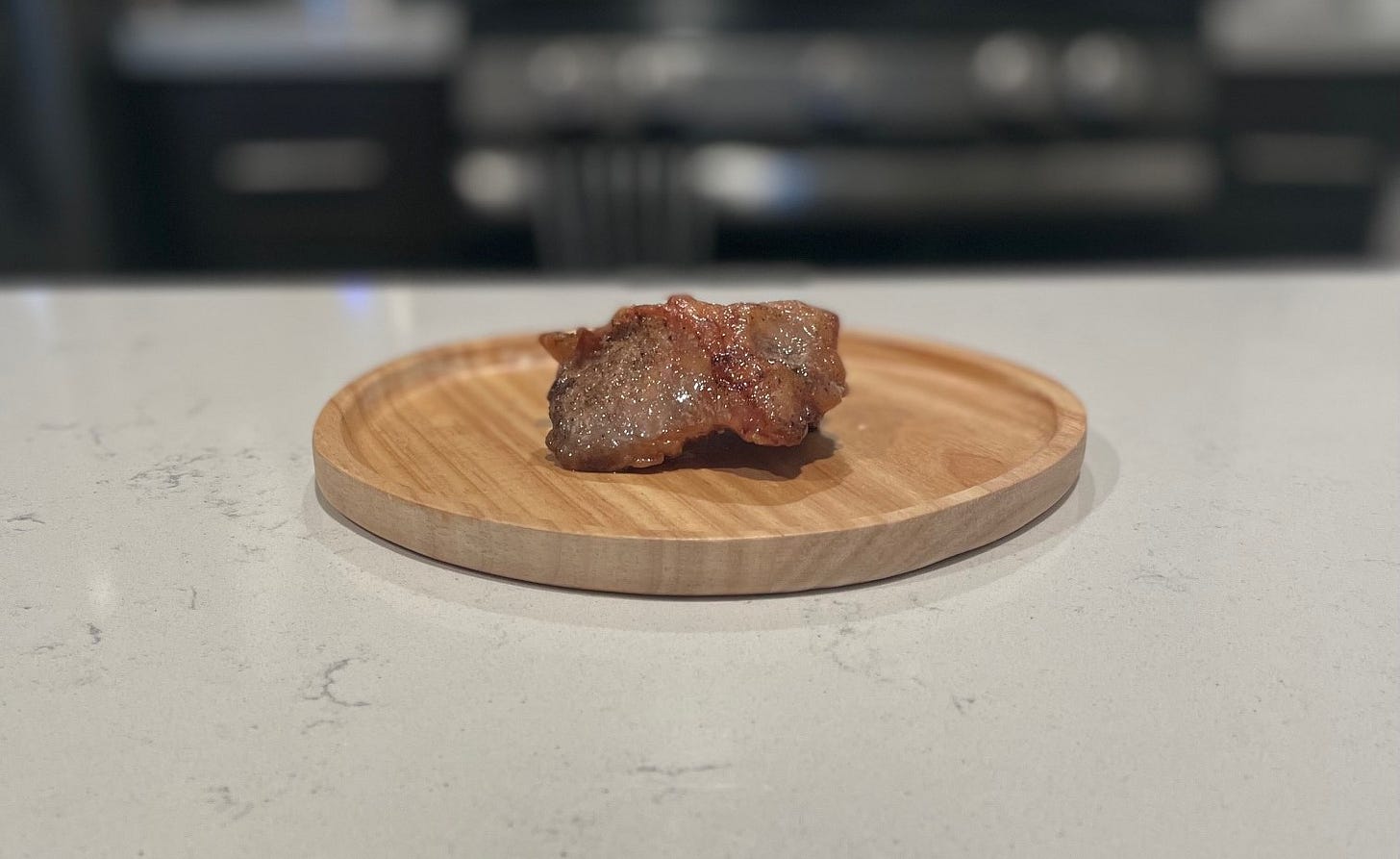Locals living across the Rocky Mountains in the United States and Canada have a regional delicacy named Rocky Mountain Oysters (also called Prairie Oysters by our Canadian friends). As the Rockies cover an area in North America that is landlocked, these are not oysters of the sea. “Rocky Mountain Oysters” is a euphemism for bull testicles from bison and cattle. The name was coined by some of the first ranchers out in the American West who did not want to waste any part of the animal and ate what traditional Chinese medicine considered a treatment for male infertility. Similar to Rocky Mountain Oysters, the moniker “Sweetbreads” can also be misleading.
What are Sweetbreads?
Neither made of sugar nor bread, Sweetbreads, like Rocky Mountain Oysters, are a type of offal – the culinary term for organ meats. They are the thymus and pancreas of a ruminant animal. Sweetbreads are further broken down by names due to their location in the body next to other parts - Thymus is occasionally known as a throat sweetbread, whereas pancreas is sometimes known as heart sweetbread. The word “Sweetbread” as a definition for these organs dates back to 16th century England, and their consumption has also been more of a practice outside of the United States.
Eating the organs comprising the Sweetbread definition is common in many other cuisines outside of the United States as most Americans are not familiar with these cuts of meat. They are especially revered in Argentina as well as in the tacos of Mexican cuisine, Sweetbreads being Mojellas in Spanish. Despite being more common outside of the United States, Sweetbreads can be found in select restaurants across America but are typically from veal.


Why Eat Sweetbreads?
Despite Sweetbreads being a misnomer, they are our personal favorite organ meat from a nose-to-tail diet. In fact, we would call Sweetbreads the filet mignon of organ meats. Filet mignon is so special because it is not only delicious and tender but also incredibly scarce, with one beef carcass yielding only one pound of filet mignon. Similarly, Sweetbreads, the most scrumptious organs, are even more scarce, with a whole bison pancreas yielding just five ounces and a whole thymus yielding just one ounce of exquisite meat, according to Northstar Bison. They are a delicacy in most cuisines in which they are commonly consumed and command a higher price than other offal, a designation definitely deserved.
Like filet mignon but even better, the taste and flavor of Sweetbreads are in a category of their own, different than any other cut of meat. They have a rich flavor due to their higher fat content; some say a slight creamy taste. They are also the most tender cut among organ meats and are very easy for minimalist chefs to prepare since they don’t dry out from overcooking like most meat cuts. Instead, Sweetbreads tend to develop a delicious crispy crust in cooking.


Compared to liver, kidney, and heart which are some of the more popular organ meats to consume, Sweetbreads don’t have a distinct smell and taste that many find off-putting and are much easier to cook. As mentioned on this blog before, I consume liver in desiccated capsules instead of cooked because of how off-putting the smell and taste of it are. Also, since Sweetbreads are so small and tender, they cook much faster compared to other organ meats like heart which, being rather tough, can take a long time to cook. Sweetbreads additionally require little seasoning unlike liver, heart, and kidney which often have to be masked in spice and hidden within other, more palatable meats and dishes.
Are Sweetbreads Healthy?
Sweetbreads, like all organ meats, are nutritional health powerhouses. Per renowned health blogger Dr. Kiltz’s article, Sweetbreads are:
Quality protein containing all nine essential amino acids – 4 oz contains 12 grams of protein
High in Vitamin C (rare for nearly all cuts of meat, organ or muscle)
Rich in essential minerals Potassium, Phosphorous, Zinc, Selenium, and Iron
Abundant in a variety of B Vitamins, including very high levels of B12
Where can I find Sweetbreads?
Due to their limited consumption by Americans, Sweetbreads are difficult to find in grocery stores in the United States (if you know where, please share in the comments section). However, sometimes they can be found in select ethnic grocery stores. The surest way to get your hands on sweetbreads and try a new special dish in the kitchen is to custom order them from your local butcher who should be able to source them.
If that is not possible, they can be ordered from online meat sellers. However, this is the priciest option since shipping must be frozen. Our preferred online seller is Northstar Bison, with the company putting the animals and environment first and having the best shipping. For the brave, they also sell Rocky Mountain Oysters.
How do I cook them?
Sweetbreads turn out great over a cast iron skillet or on the grill. When cooking them, we prefer to season with salt and pepper. Then sauté over medium heat with about a teaspoon of grass-fed ghee due to its high smoke point for a few minutes each side, depending on which organ is being cooked. Thymus is very small, requiring less cooking time than pancreas.
Some chefs recommend removing the thin membrane wrapped around the organ meats which may further enhance the flavor and texture. However, we do not see this as necessary.
For preparation, some also recommend brining or putting them in water with some lemon juice to soften them up before cooking. We have not tried this, so we cannot speak to whether or not there is a benefit, but it may make sense for some chefs out there.
For more challenging recipes bursting with flavor, we recommend the following:
Argentine “Gaucho” style Sweetbreads
French-Inspired Sweetbreads à la Crème
Organ meats can be tough for many people to try, since most of those they’ve heard about such as liver, kidney, etc., are so pungent and off-putting. For those of you who have never tried an organ meat or who have not had a pleasant experience trying organ meats, we highly recommend making the investment to try Sweetbreads. They aren’t the pastries their nickname might lead you to believe, but eating them is certainly a real treat. And, they aren’t Rocky Mountain Oysters, after all…
Fun bonus: if you’re curious about more interesting and misleading food names, we recommend this list.
👉If you enjoyed this post, feel free to share it with friends!
Related Articles:









Thank you for your research. We have taken a little bit of a cowards way out for sweet breads and ask our butcher to grind it in our hamburger. Its quite tasty. Liver I had to acquire a taste for it. And my body calls for it from time to time. The other is we were at a latin restaurant in GA. They served Marrow in Canoes. I didn't have room as we were traveling and I normal eat omad but because of people we were visiting I ate three times that day. But we also mix hamburg in our marrow soup. Its quite tasty. Thanks again for your research.
Thanks for this well researched and very entertaining piece. I was already interested in adding organ meats to my routine and will try to track down some sweetbreads for my first dive into the world of offal. Cheers